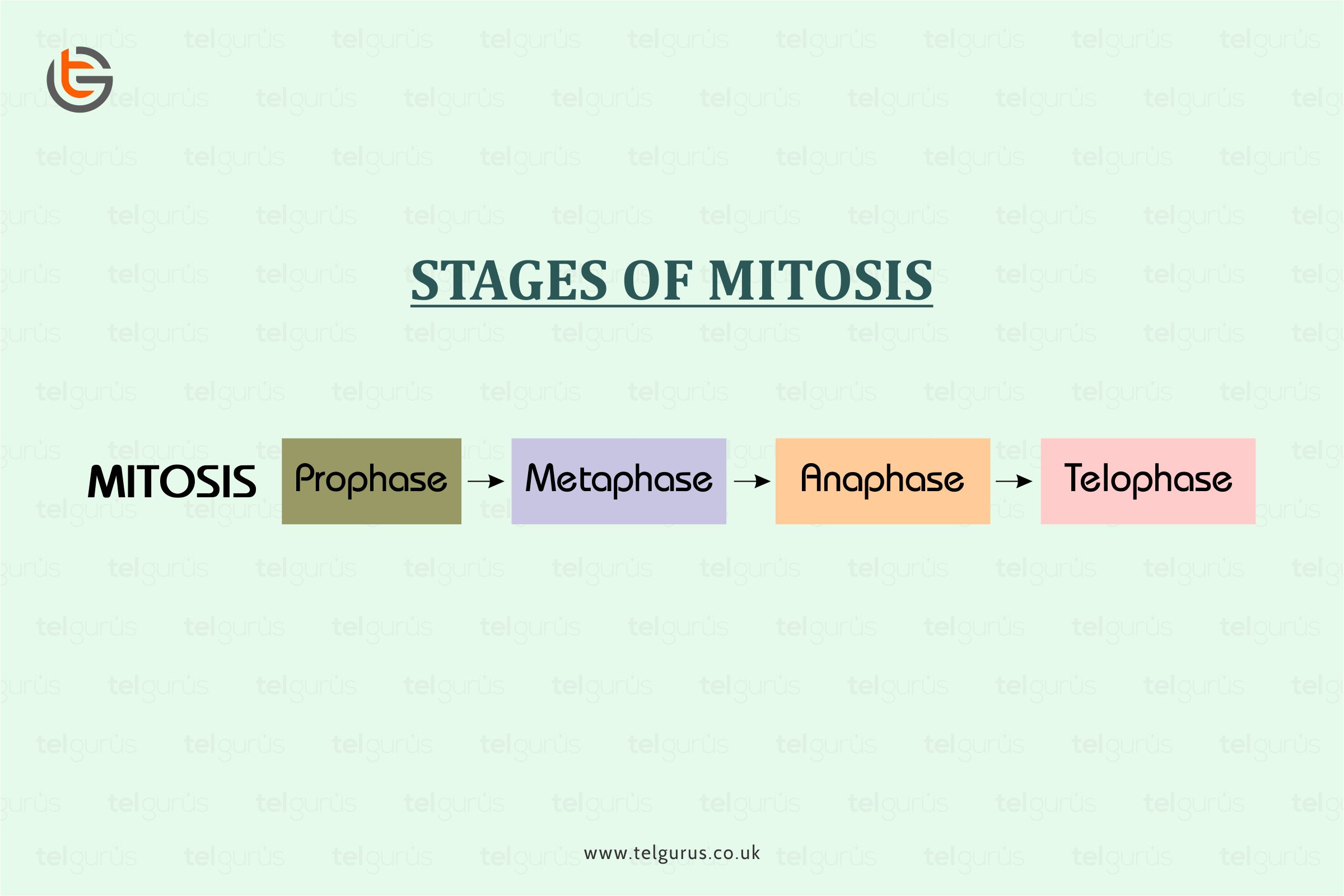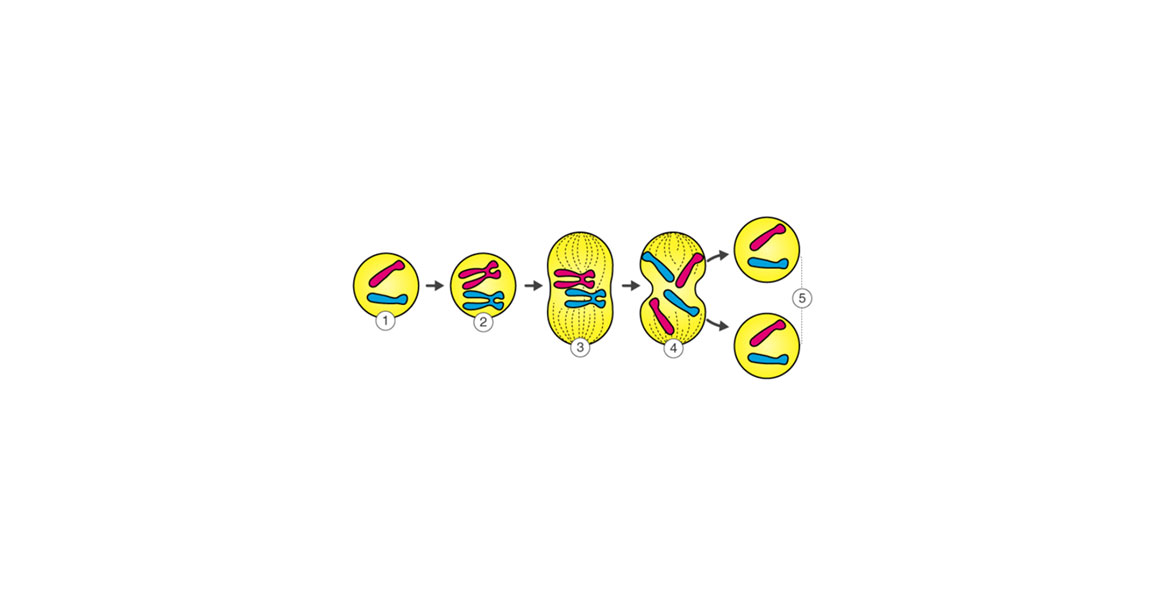Enrich your knowledge with our informative blogs
Describe the four stages of mitosis.

Mitosis refers to an asexual reproduction process observed in unicellular organisms. Cell division is basically the reproduction’s diving process at the cellular level. Several eukaryotic cells split in a way where the number of chromosomes remains the same except in the germ cell case where the chromosome number is halved.
The mitosis process shows the equational division as depicted in the below-mentioned diagram indicating the five phases of mitosis
Here
- Stage 1 shows Interphase
- Stage 2 shows Prophase
- Stage 3 shows Metaphase
- Stage 4 shows Anaphase
- Stage 5 shows Telophase
Mitosis basically refers to the cell cycle’s phase where the cell’s nucleus is split into two nuclei containing an equal amount of genetic material in the daughter nuclei.
Mitosis is an essential process for cell growth and the replacement of worn-out cells. Let us get acquainted with each stage individually.
Mitosis stages
Before the occurrence of prophase, a cell spends most of its life in the interphase. Here the preparations are generally made before the mitosis begins.
As the process involves nucleus division, prophase is the technically first stage but indeed the interphase is also essential.
Interphase
Before entering the actual mitosis process, a cell generally spends its growth period under interphase. Here it undergoes the following phases:
G1 Phase: It’s a period before DNA synthesis
S Phase: It’s a phase during which the synthesis of DNA takes place
G2 Phase: It’s a phase that occurs between the DNA synthesis and prophase beginning.
Prophase
Prophase immediately follows the G2 and S phases of the whole cycle. It is generally marked by genetic material condensation to form a compact mitotic chromosome comprised of two chromatids attached at the centromere.
The Prophase completion is generally characterized by the initiation of the mitotic spindle’s assembly, the proteinaceous and microtubules components of cytoplasm which help in the process and the nuclear envelope begins disintegrating.
Prometaphase
Here the nuclear envelope disintegrates. In this phase, the microtubules are permitted to extend from centromere to chromosome. The microtubules are usually attached to the kinetochores that permit the cell to move the chromosome around.
Metaphase
During Metaphase, the microtubules begin pulling the chromosomes with equivalent force. The chromosomes end up in the middle of the cell and this region is called the metaphase plate. And therefore, each cell gets a complete functioning genome.
Anaphase
The sister chromatid’s splitting marks the onset of anaphase. These sister chromatids become the daughter nuclei’s chromosomes. The chromosomes are then pulled towards the pole by the fibers attached to each chromosome’s kinetochores. Each chromosome’s centromere leads at the edge while the arms trail behind.
Telophase
The chromosomes that cluster at the two poles begin coalescing into an undifferentiated mass because the nuclear envelope begins forming around it. The ER complex, the Golgi bodies, and nucleolus that had disappeared post prophase begin to reappear.
Telophase is generally followed by cytokinesis that denotes the cytoplasm’s division to form two daughter cells. Therefore, it marks the cell division completion.
Bottom Line!
Mitosis undergoes the five phases to perform two essential functions. This includes
- The mitosis process helps in organism development. In single-celled organisms, mitosis is a process of asexual reproduction.
- Mitosis also helps in damaged tissues replacement. The cells present near the damaged cells initiate mitosis when they do not sense the neighboring cells and the dividing cells reach each other and cover the damaged cells.
Read More – Biology Questions
View More – Useful links for Your Child’s Development

Visualize the in-depth understanding of the natural world!
Biology would sound more interesting when your curiosity levels are satisfied with better visuals & logical explanations.
Categories
Recent Posts
- List of the qualities you should look for in your tutors?
- What is the most useful formulas in math?
- Describe the process of eating to defecation of food?
- Difference between the natural and artificial active response by the immunology system.
- Explain the different circle theorems
- How are nerve cells adapted to their function?











